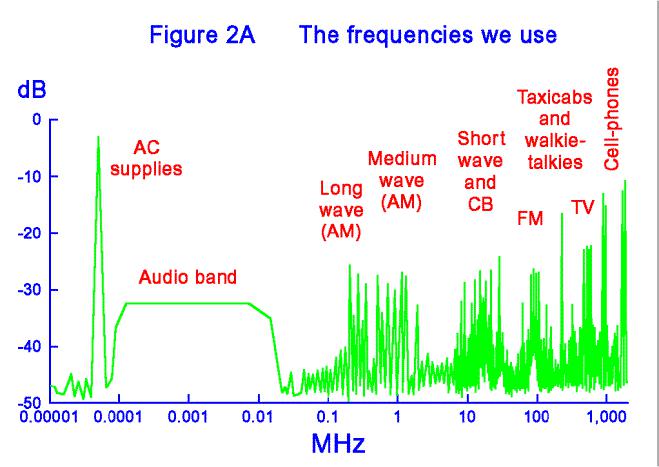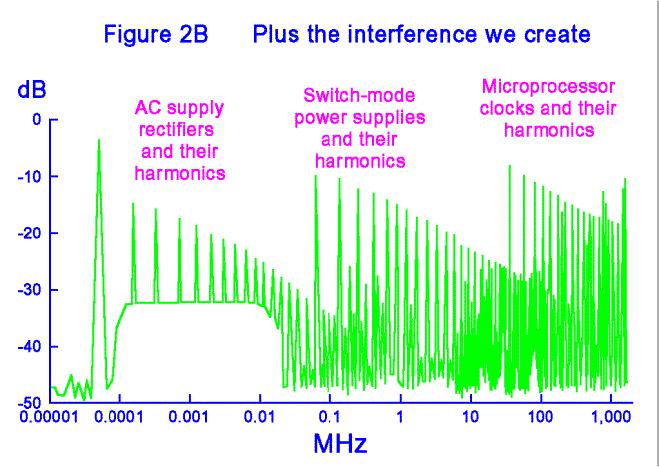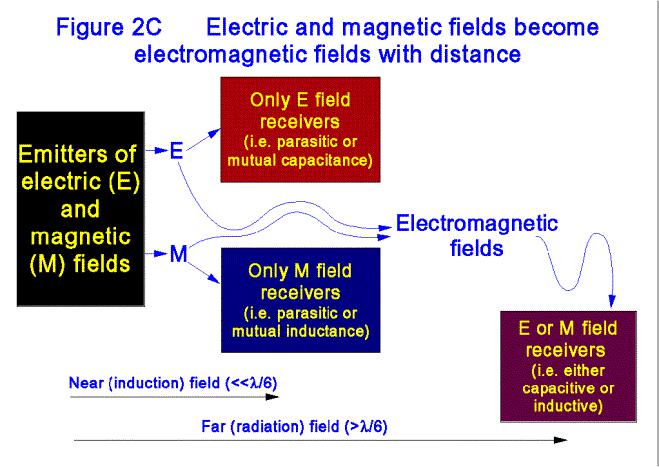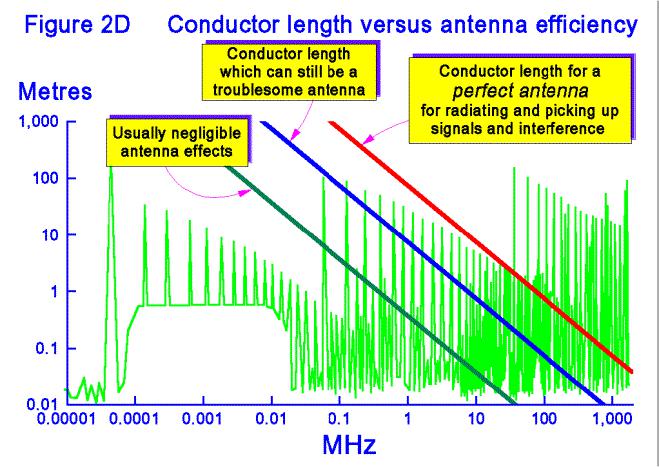
- •Spectrum use and the possibilities for interference
- •Leakage and antenna effect of conductors
- •All cables suffer from intrinsic resistance, capacitance, and inductance
- •Avoiding the use of conductors
- •Cost/benefit analyses of alternatives to conductors
- •Cable segregation and routing
- •Getting the best from cables
- •Transmission lines
- •EMC considerations for conductors used inside and outside products
- •Pairing send and return conductors
- •Getting the best from screened cables: the screen
- •Getting the best from screened cables: terminating the screen
- •Terminating cable screens at both ends
- •Getting the best from connectors
- •Unscreened connectors
- •Connectors between PCBs
- •Screened connectors
- •Further reading

Design Techniques for EMC – Part 2
Cables and Connectors
By Eur Ing Keith Armstrong CEng MIEE MIEEE
Partner, Cherry Clough Consultants, Associate of EMC-UK
This is the second in a series of six articles on best-practice EMC techniques in electrical/electronic/mechanical hardware design. The series is intended for the designer of electronic products, from building block units such as power supplies, single-board computers, and “industrial components” such as motor drives, through to stand-alone or networked products such computers, audio/video/TV, instruments, etc.
The techniques covered in the six articles are:
1)Circuit design (digital, analogue, switch-mode, communications), and choosing components
2)Cables and connectors
3)Filters and transient suppressors
4)Shielding
5)PCB layout (including transmission lines)
6)ESD, electromechanical devices, and power factor correction
A textbook could be written about any one of the above topics (and many have), so this magazine article format can do no more than introduce the various issues and point to the most important of the best-practice techniques. Many of the techniques described in this series are also important for improving signal integrity.
Table of contents for this part
2.All cables are antennas
2.1Spectrum use and the possibilities for interference
2.2Leakage and antenna effect of conductors
2.3All cables suffer from intrinsic resistance, capacitance, and inductance
2.4Avoiding the use of conductors
2.4.1Cost/benefit analyses of alternatives to conductors
2.5Cable segregation and routing
2.6Getting the best from cables
2.6.1Transmission lines
2.6.2EMC considerations for conductors used inside and outside products
2.6.3Pairing send and return conductors
2.6.4Getting the best from screened cables: the screen
2.6.5Getting the best from screened cables: terminating the screen
2.6.6Terminating cable screens at both ends
2.7Getting the best from connectors
2.7.1Unscreened connectors
2.7.2Connectors between PCBs
2.7.3Screened connectors
2.8Further reading
Design techniques for EMC – Part 2 – Cables and connectors |
Cherry Clough Consultants March 99 |
Page 1 of 1 |

2.All cables are antennas
2.1Spectrum use and the possibilities for interference
Figure 2A shows the frequencies in common use in civilian daily life, from AC powerlines through audio frequencies, long, medium, and short-wave radio, FM and TV broadcast, to 900MHz and 1.8GHz cellphones.
The real spectrum is busier than this – all of the range above 9kHz is used for something by someone.
This figure will soon need extending to 10 (or even 100GHz) as microwave techniques become more commonplace in ordinary life.
Figure 2B overlays the usage spectrum of Figure 2A with a less familiar spectrum showing the typical emissions from commonplace electrical and electronic equipment.
Design techniques for EMC – Part 2 – Cables and connectors |
Cherry Clough Consultants March 99 |
Page 2 of 1 |

AC mains rectifiers emit switching noise at harmonics of the fundamental to considerable frequencies, depending on their power.
A 5kVa or so power supply (whether linear or switch-mode) can fail conducted emissions limits up to several MHz due to the switching noise of its 50 or 60Hz bridge rectifier.
Thyristor-based DC motor drives and phase-angle AC power control will have similar emissions. These emissions can easily interfere with long and medium wave broadcasting, and part of the shortwave band.
Switch-mode power convertors can operate at fundamental frequencies between 2 and 500kHz. It is not unusual for a switch-mode convertor to have significant levels of emissions at 1,000 times its switching frequency. Figure 2B shows the emissions from a 70kHz switching power supply typical of a personal computer. These emissions can interfere with radio communications up to and including the FM broadcast band.
Figure 2B next shows the typical emissions spectrum from a 16MHz clocked microprocessor or microcontroller. It is not unusual for these commonplace items to exceed emissions limits at frequencies of 200MHz or more. As personal computers are now using 400MHz clocks and heading for 1GHz, it is obvious that digital technology is capable of interfering with (and being interfered with) all the upper range of our spectrum.
The reason for mentioning this is that all conductors are antennas. They all convert conducted electricity into electromagnetic fields, which can then leak out into the wider environment. They all convert electromagnetic fields in their locality into conducted electrical signals. There are no exceptions to this rule in our universe.
Conductors are thus the principal means by which signals cause radiated emissions, and by which external fields contaminate signals (susceptibility and immunity).
Design techniques for EMC – Part 2 – Cables and connectors |
Cherry Clough Consultants March 99 |
Page 3 of 1 |

2.2Leakage and antenna effect of conductors
Electric (E) fields are created by voltages on conductor areas, and magnetic (M) fields are created by currents flowing (in loops, as they always do). All electrical signals create both types of field with their conductors, so all conductors leak their signals to their external environment, and allow external fields to leak into their signals.
At distances greater than one-sixth of the wavelength (λ) of the frequencies of concern, E and M fields develop into full electromagnetic (EM) fields with both electric and magnetic components.
For example: the transition to full EM fields occurs at 1.5 metres for 30MHz, 150mm for 300MHz, and 50mm for 900MHz.
So as frequencies increase, treating conductors as merely electric or magnetic field emitters and receivers becomes inadequate, as shown by figure 2C.
Another effect of increasing frequencies is that when λ is comparable with conductor length, resonances occur. At some of these the conversion of signals to fields (and vice-versa) can reach almost 100%. E.g. a standard whip antenna is merely a length of wire, and is a perfect convertor of signals to fields when its length equals one-quarter of λ.
This is a very simplistic description, but as far as the user of cables and connectors is concerned the important thing is that all conductors can behave as resonant antennae. Obviously we want them to be very poor antennas, and assuming that a conductor is like a whip antenna (good enough for our purposes) we can use Figure 2D to help guide us.
Design techniques for EMC – Part 2 – Cables and connectors |
Cherry Clough Consultants March 99 |
Page 4 of 1 |

The vertical axis of Figure 2D is in metres of conductor length, and the spectrum of Figure 2B is retained as a visual guide. The right-hand-most (red) diagonal shows conductor length versus frequency for a perfect antenna.
Obviously, at frequencies in common use, even very short conductors can cause emissions and immunity problems. A signal or field at 100MHz finds a 1 metre long conductor to be a very efficient antenna, and at 1GHz 100mm conductors make good antennae. This simple fact is responsible for a large number of “black magic” EMC problems.
Not so many years ago, the frequencies in commonplace use were much lower and typical cable lengths were not very effective antennae, which is why electrical wiring “custom and practice” tends to be out of date.
The middle (blue) red diagonal in Figure 2D shows conductor lengths which do not make very efficient antennae, but can still cause problems. The left-hand (green) diagonal shows lengths which are so short that (for all except the most critical products) their antenna effects can usually be neglected.
How many times have you heard someone say: “It’s OK, I’ve earthed it.”? It is a standing joke in the EMC community that RF is colour blind, and so can’t tell that the green/yellow striped conductor they are travelling in is supposed to be a perfect earth, and consequently all earth conductors are antennas too.
2.3All cables suffer from intrinsic resistance, capacitance, and inductance
Forgetting fields and antennas for a moment: a few quick-and-dirty examples will show how even very tiny departures from the ideal cause problems for signals carried by conductors at commonplace modern frequencies.
•The resistance of a 1mm diameter wire at 160MHz is 50 times more than at DC, due to the skin effect forcing 67% of the current to flow in its outermost 5 microns at that frequency.
Design techniques for EMC – Part 2 – Cables and connectors |
Cherry Clough Consultants March 99 |
Page 5 of 1 |
